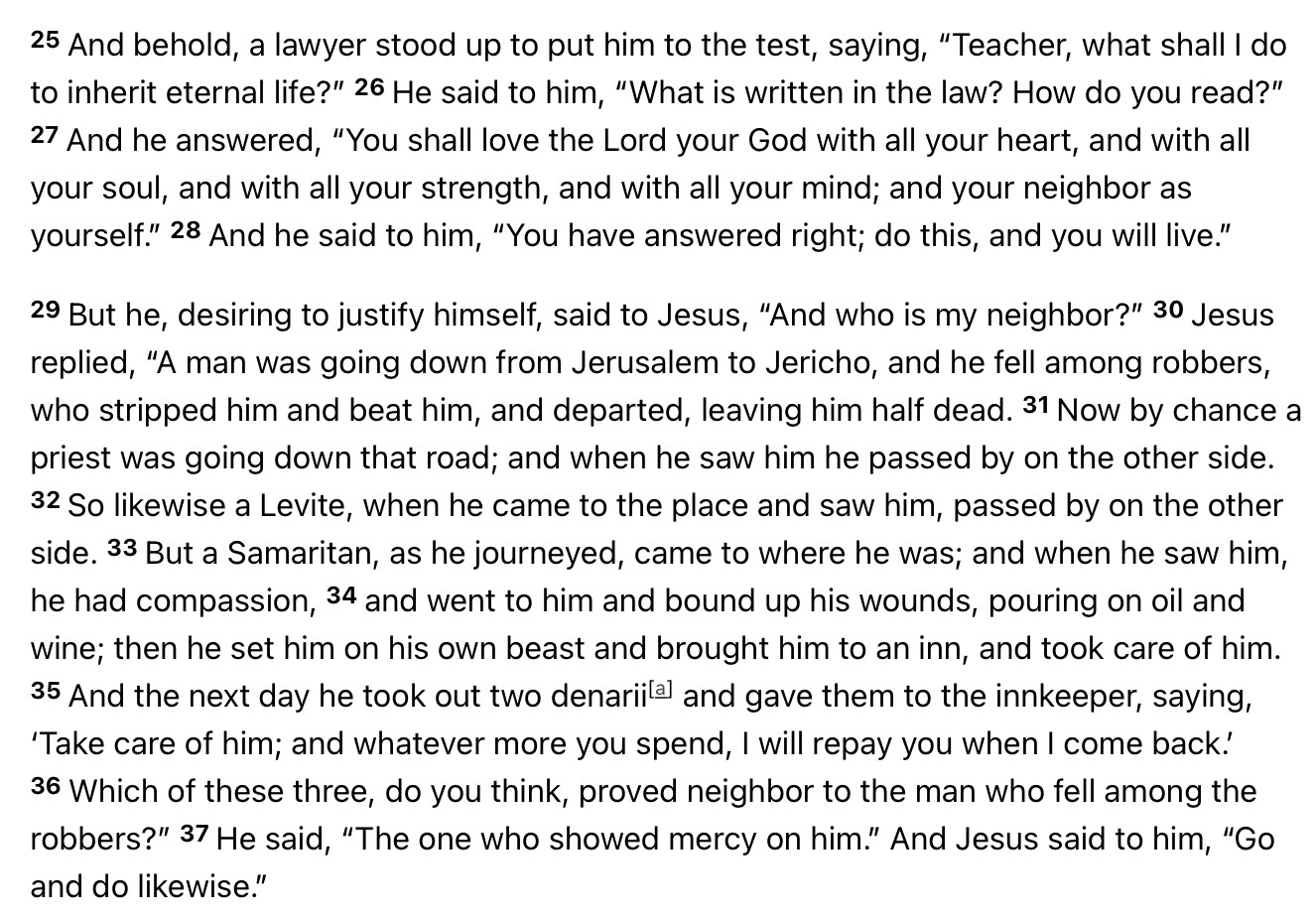What’s your role in the story?
A helpful tool for reading sacred stories is to read the story, and then to ask where you imagine yourself in the story.
It’s common to imagine ourselves as the hero, the protagonist, or the wronged victim.
In this passage, Jesus responds to a question with a parable.
The parable is another helpful tool, one that keeps us from thinking about religion and ethics as merely academic questions.
The parable is a story in which we can see ourselves from multiple angles, if we are willing to take the time to try.
I sometimes imagine myself as the academic lawyer, trying to ask an academic question to examine another academic.
My question is turned back on me, and I, the clever academic, give a good academic answer.
Jesus then turns my academic answer into one that touches my skin. That gives me goosebumps, and I cover my skin with another academic question. I’m safe again, or so I think.
Jesus kindly sees me protecting myself from having to live what I claim to believe, and gently offers a story. The story disarms the academic because it seems so unimportant in my academic world.
But it turns out the story is a mirror, and when I open my eyes even a little, I see that I am in the story.
And I’m not where I thought I was. But the story gives me a chance to consider another question: if I could choose, where would I like to be in the story?
